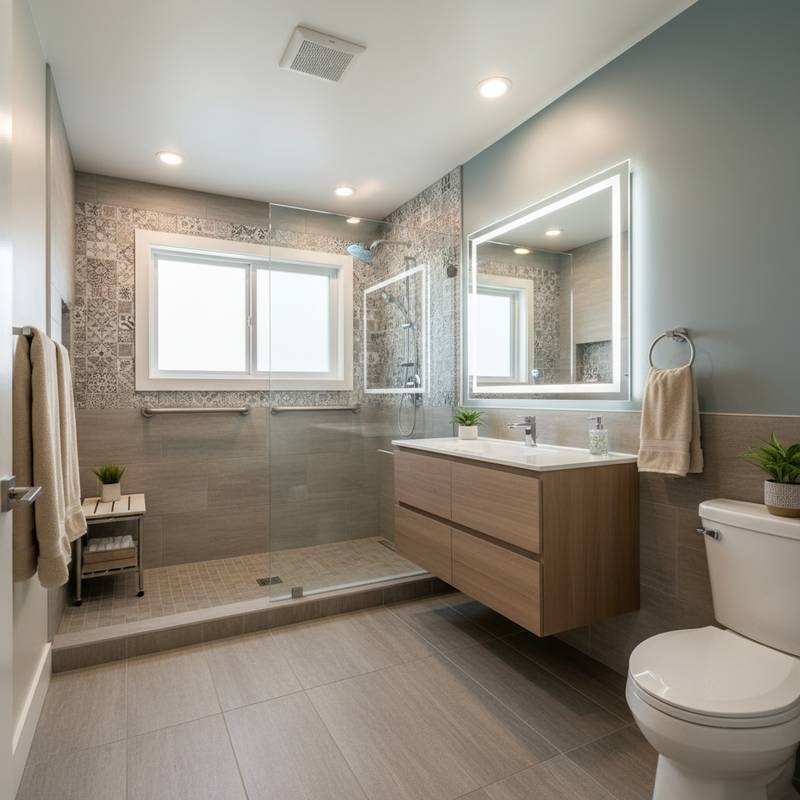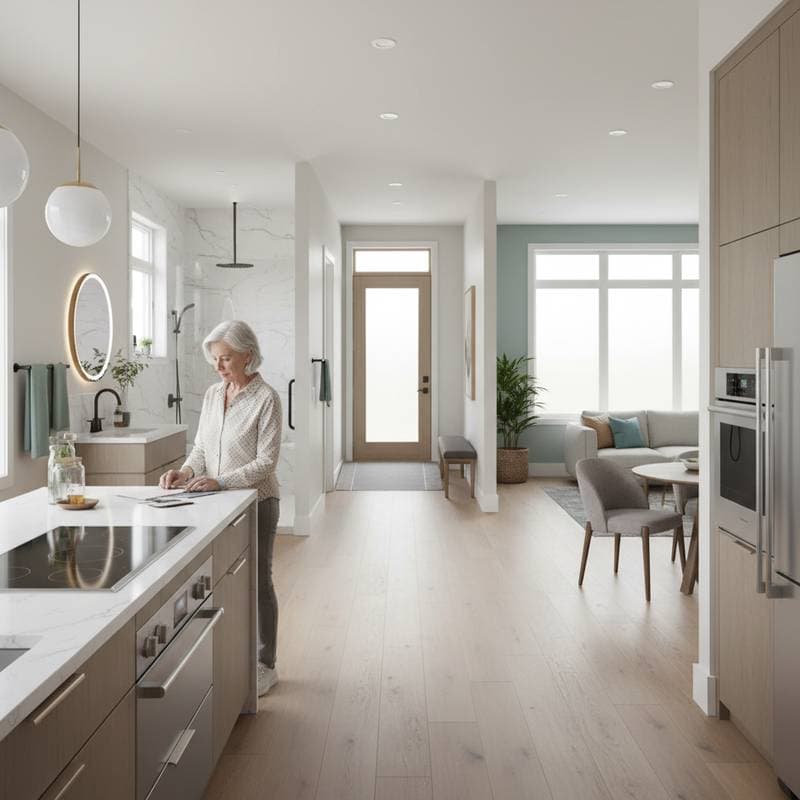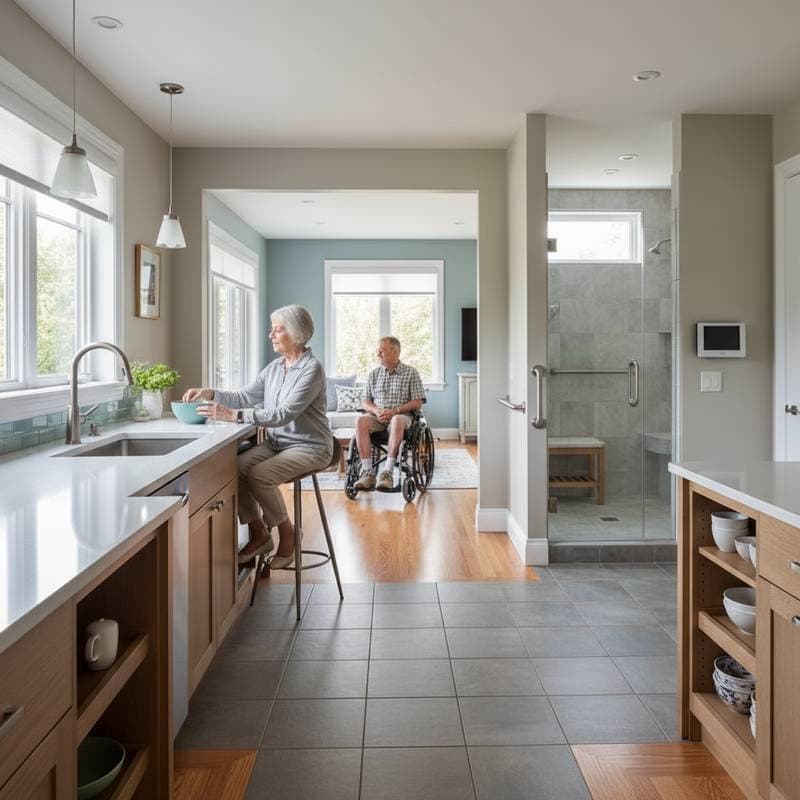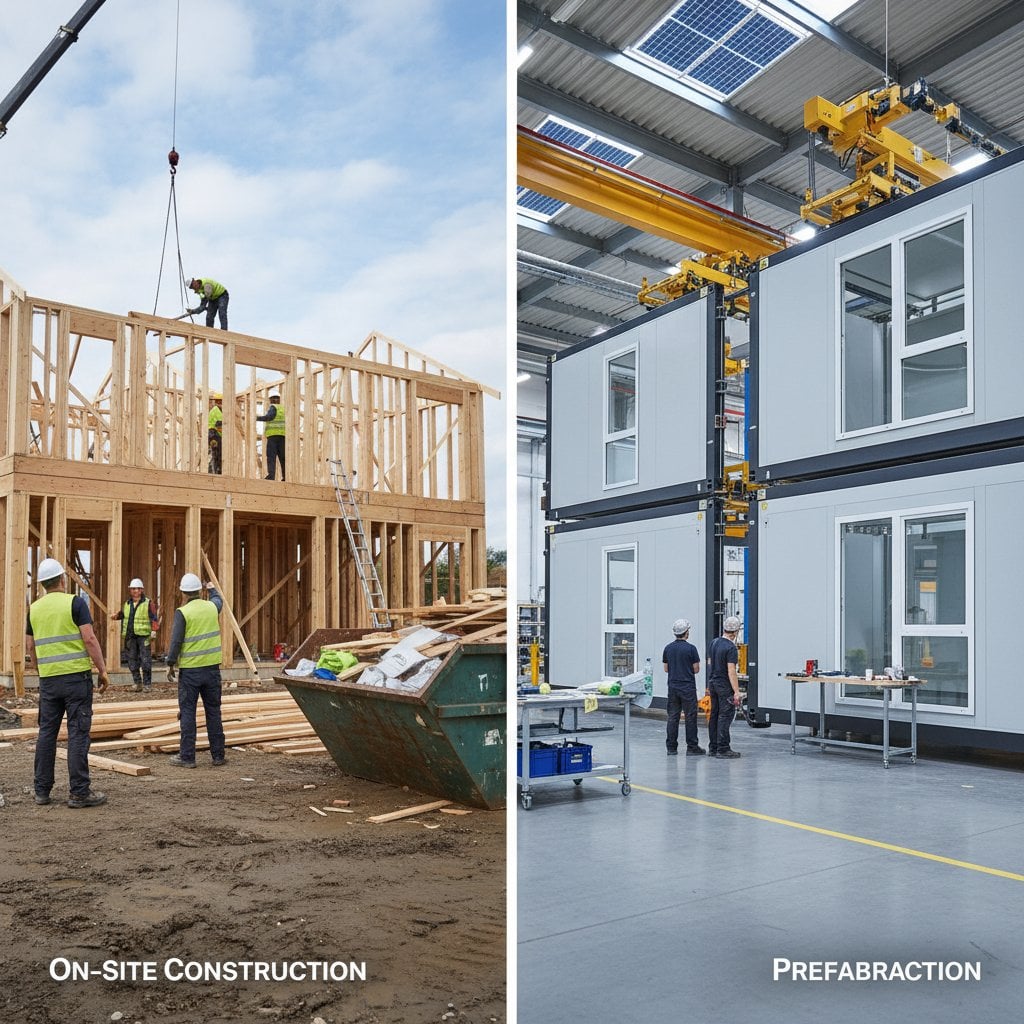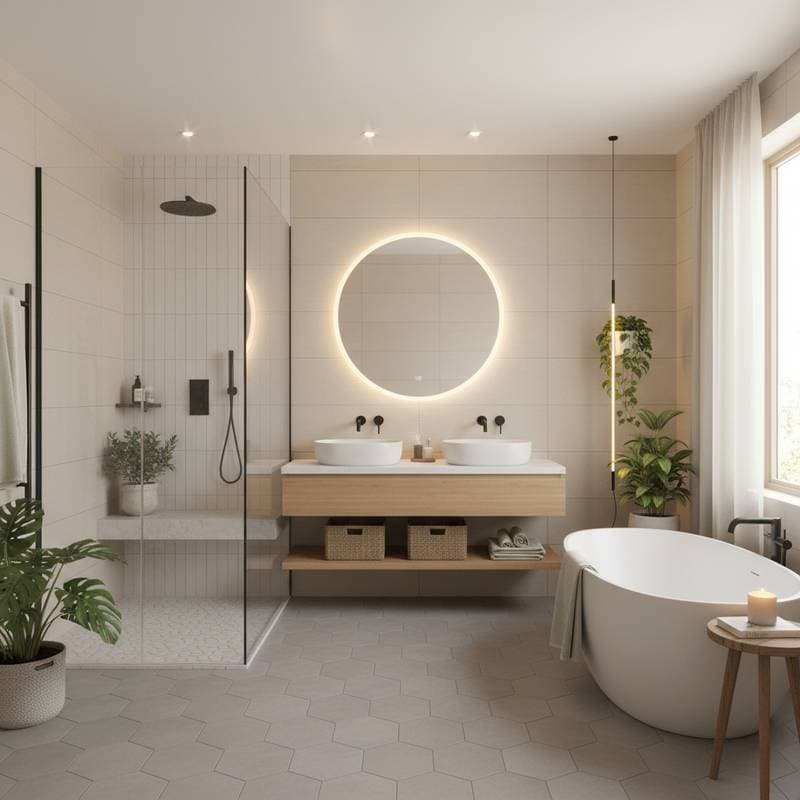2025 Costs for Aging-in-Place Universal Design
Quick Overview
Aging-in-place universal design modifies a home to support safe, independent living over the long term while preserving style and functionality. Homeowners typically invest between $15,000 and $75,000, based on project scale and home size. These efforts span basic additions, such as grab bars, to comprehensive overhauls of bathrooms and kitchens. Completion times vary from one to four weeks. Moderate risks arise from potential plumbing, electrical, or structural alterations, which demand oversight by certified experts.
Step-by-Step Guide to Implementation
1. Evaluate Your Home's Layout
Begin by touring your residence to identify potential hazards, including narrow doorways, elevated thresholds, or slick surfaces.
- Inspect illumination levels in corridors and on staircases.
- Gauge doorway widths; measurements below 32 inches hinder mobility.
Verification Point: Compile a documented inventory of vulnerable zones and ranked priorities for enhancement.
2. Establish Clear Pathways
Designate at least one entry without steps and maintain a 36-inch unobstructed path across primary rooms.
- Substitute raised thresholds with sloped ramps.
- Adhere to a 1:12 slope for any added ramps to ensure usability.
Verification Point: Navigate from the entrance to key living areas with ease and without obstacles.
3. Enhance Doorways and Hardware
Eliminate stops or trim to expand openings. Swap traditional knobs for lever-style handles.
- For heavier doors, employ a jigsaw equipped with a precision blade to adjust dimensions carefully.
- Select handles featuring textured, slip-resistant surfaces.
Verification Point: All doors operate effortlessly with a single hand and offer a minimum 32-inch clearance.
4. Fortify Bathroom Accessibility
Bathrooms represent the primary location for falls and injuries.
- Secure grab bars adjacent to toilets, bathtubs, and showers by anchoring them directly into wall studs.
- Convert standard tubs to curbless showers with minimal or absent thresholds.
- Incorporate flooring materials that achieve a friction coefficient of 0.6 or greater to prevent slips.
- Integrate a adjustable showerhead mounted on a sliding rail.
Verification Point: Access and utilize all bathroom elements without danger of falls or excessive effort.
5. Optimize Kitchen Configuration
Reduce countertop heights to 34 inches or lower to accommodate seated preparation. Incorporate sliding shelves and ergonomic D-ring pulls on cabinetry.
- Relocate everyday essentials to arm's reach at waist level.
- Embed task lighting beneath cabinets to illuminate work surfaces effectively.
Verification Point: Prepare meals, maintain cleanliness, and access storage with minimal physical demand.
6. Refine Lighting and Control Systems
Transition to energy-efficient LED installations paired with motion-activated or adjustable dimmers. Position switches between 36 and 44 inches from the floor to suit varied heights.
- Opt for flat rocker-style switches that require less force to activate.
Verification Point: Uniform illumination covers all spaces, with controls accessible from standing or seated positions.
7. Integrate Smart Technology
Deploy voice-activated systems for lights, locks, and climate control to minimize exertion and bolster security.
- Prioritize platforms compatible with alert systems for emergencies.
Verification Point: Manage core home functions through verbal commands alone, independent of mobility.
Validation and Resolution Strategies
Frequent Challenges
- Grab bars detaching from superficial wall attachments rather than structural supports.
- Doors hanging unevenly following adjustments.
- Harsh light reflections causing visual discomfort.
Targeted Solutions
- Reinforce grab bars using wall-mounted toggles or reinforced backing plates.
- Fine-tune hinges or shave edges to restore proper alignment and closure.
- Introduce soft-focus bulbs or relocate sources to eliminate shadows and glare.
Verification Point: Modifications demonstrate stability, fluid operation, and alignment with accessibility objectives.
Engaging Professional Assistance
Summon a qualified contractor for tasks encompassing:
- Electrical upgrades or circuit expansions.
- Plumbing rerouting or appliance installations.
- Alterations to load-bearing walls, flooring, or stair systems.
Cost Breakdown
- Labor rates range from $75 to $150 hourly, varying by specialization.
- Material expenses include $5 to $50 per square foot for resilient flooring, $150 to $800 per sanitary fixture, and $200 to $1,000 for access ramps or elevators.
- Debris clearance fees span $100 to $300.
Selecting Reliable Expertise
- Confirm valid credentials and coverage for liability.
- Solicit itemized proposals in writing.
- Seek endorsements from comparable undertakings.
- Examine documentation of prior compliance inspections.
Strategies for Optimal Results
Focus first on protective elements over visual appeal; select surfaces that prioritize grip and longevity.
Bundle modifications where feasible, such as routing new electrical lines during floor renewals.
Steer clear of superficial remedies that fall short of established accessibility criteria; robust execution yields enduring savings.
Anticipate evolving requirements by incorporating expansive corridors and seamless entries, even absent current necessity for wheeled mobility.
Preserve harmony with existing decor through understated tones and streamlined fixtures, ensuring the space remains inviting rather than clinical.
Advancing Your Home Transformation
Universal design for aging in place fosters sustained security and ease within familiar surroundings. Meticulous assessment and premium selections mitigate risks while enhancing autonomy. Initiate with a thorough evaluation, then sequence improvements according to financial capacity and immediacy. Delegate complex electrical or structural elements to certified specialists, reserving simpler tweaks for personal execution.
This approach centers on utility, protection, and enduring benefits, evolving your residence into a responsive haven. Incremental or comprehensive changes alike cultivate assurance and stability in routine activities.

